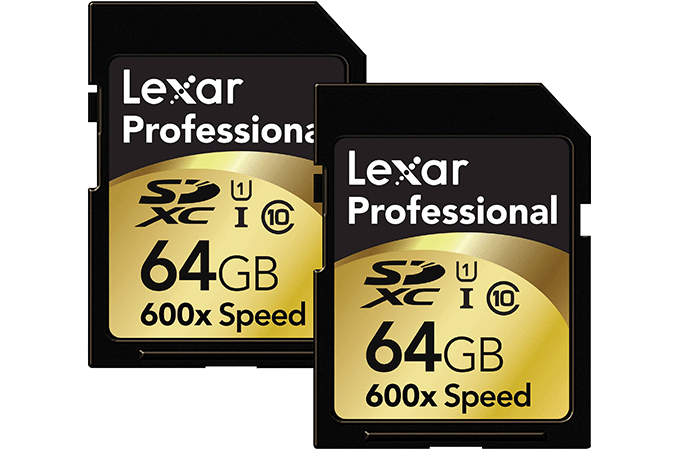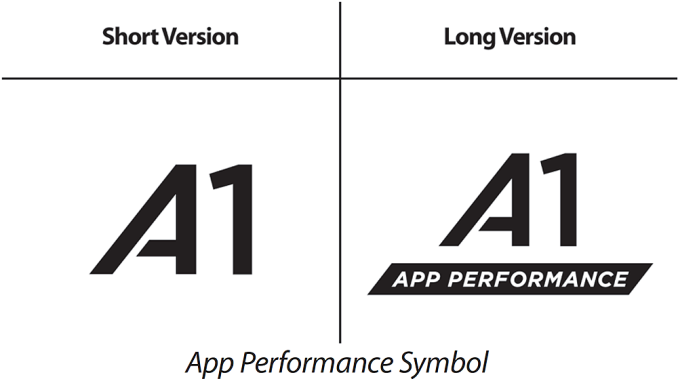The SD Card Association to Classify IOPS Performance of Memory Cards via Logo
by Anton Shilov on November 28, 2016 1:00 PM EST- Posted in
- Memory Cards
- NAND
- SD cards
- SD 5.1
- App Performance Class

The SD Association this week announced the SD Specification 5.1, which will introduce the so-called Application Performance Classes that will specify minimum read and write IOPS performance supported by the upcoming SD cards. The App Performance Classes are designed to help end users to ensure that memory cards they get are capable of providing decent experience when running applications.
When Panasonic, SanDisk and Toshiba developed the Secure Digital card standard in the late 1990s, their main goal was to create miniature removable devices to store multimedia files (music, images, short videos, etc.) and even operating systems that would be more versatile than MMC cards and would offer a path for future evolution. Over time, SD cards have increased capacity, improved sequential performance and even gained new interleaving modes to enable new usage models (such as recording of 360° videos or multiple video streams at once). In today's climate, usage patterns of SD cards by different people vary greatly. Some need to record and store UHD content, other need to run applications, which is why the former benefit from great sequential performance, whereas the latter need guaranteed sequential and random read/write performance.
Earlier this year the SD Association released the Secure Digital 5.0 specification that takes into account large block sizes of modern NAND flash chips and introduces the new Video Speed Class labels that define minimum write speeds supported by certain cards. Now the SD 5.1 spec introduces App Performance Classes that express minimum sustained sequential performance as well as random read and write IOPS performance. The first defined class is known as A1.
| App Performance Class 1 (A1) Minimum Performance Measures | ||||
| Sequential | Read IOPS | Write IOPS | ||
| 10 MB/s | 1500 | 500 | ||
The SD 5.1 defines the App Performance Class 1 (described with one of the A1 symbols) to require SD cards to provide a sustained sequential performance of 10 MB/s, a performance of 1500 random read IOPS as well as 500 random write IOPS. Eventually, the SD Association plans to introduce higher App Performance levels when the market requires. It should be noted that levels of performance of the App Performance Classes are only guaranteed on devices that comply with the SD 5.1 specifications, and are not general catch-all performance certification. As a result, owners of contemporary devices can get new cards and then test them using Google’s benchmark for SD cards to ensure that their performance is sufficient for running apps (or just check out third-party tests of SD cards).
| SD Card Performance Comparison | ||||||
| Minimum Sequential Write Speed | Speed Class | UHS Speed Class | Video Speed Class | App Performance Class | ||
| 90 MB/s | V90 | |||||
| 60 MB/s | V60 | |||||
| 30 MB/s | 3 | V30 | ||||
| 10 MB/s | 1 | V10 | A1 | |||
| 6 MB/s | 6 | V6 | ||||
| 4 MB/s | 4 | |||||
| 2 MB/s | 2 | |||||
As it usually happens with SD cards, other SD-defined labels (e.g., UHS Speed Class, Video Speed Class, etc.) that determine other characteristics of devices will accompany the new A1 labels. In fact, 10 MB/s sequential performance mandated by the App Performance Class 1 is not too high and various SD cards carrying the UHS Speed Class 1 (as well as the VSC V10) labels offer this level of performance by specification anyway. Meanwhile, the A1 label is the first to ensure that random IOPS performance is sufficient for apps designed with this performance class in mind.
Related Reading:
Source: SD Association











21 Comments
View All Comments
Alexvrb - Monday, November 28, 2016 - link
Except they're still essentially behind even with the new spec/labeling. They need A2 and maybe A3. They need UHS speed classes to cover UHS-II. Look at the new sandisk extreme pro UHS-II cards. Also, not SD but on a related topic, what happened with Samsung's UFS cards? Is UFS going to see any traction? If they're smart they'll include it in the S8.ZeDestructor - Monday, November 28, 2016 - link
I want UFS/microSD/SD slots in ALL future phones, tablets and laptops.Reality is that the SDcard protocol is shit for random IO, despite the NAND being capable of much higher, so UFS can't land fast enough. I'll take updated PCIe x4-capable XQD cards for cameras and laptops as well.
Samus - Tuesday, November 29, 2016 - link
SD sucks for phones. The interface is super power hungry. Even in DSLR's the storage bus accounts for the MAJORITY of power consumption when shooting RAW. Every phone I've ever put an SD card in had piss poor battery life, not to mention the performance of an SD card is crap compared to the internal phone storage.SD slots are a convenience in phones, for shuffling data around or reading a memory card. People who actually use it as full-time storage are just time raping themselves and should have bought a phone with more internal memory.
What would you rather have, a 32GB SSD + 128GB SD or just a 128GB SSD?
UtilityMax - Friday, December 2, 2016 - link
32GB SSD + 128GB SD is just fine for me. After all, I just put my media on the sd. I use it mostly for audio and video, which means mostly sequential read operations, and even that is not very frequent.Moizy - Monday, November 28, 2016 - link
What is the Google SD card benchmark the author is referring to? I did a search for it and couldn't find anything.ikjadoon - Monday, November 28, 2016 - link
Yeah, what? I know of Google's deep RAM stress test that some overclockers use, but not of a SD card test.mkaibear - Monday, November 28, 2016 - link
Gosh it makes much less sense when you read it as "to classify performance of Memory Cards via Lego"iranterres - Monday, November 28, 2016 - link
LOLOLOLO I've just realized the opposite.0iron - Monday, November 28, 2016 - link
How about new UFS card, no update news? Is it compatible with SD?ZeDestructor - Monday, November 28, 2016 - link
the cards are not, but the UFS readers can be made to support both microSD and UFS./me looks at samsung to ship em out already!